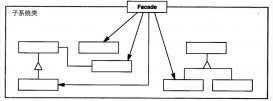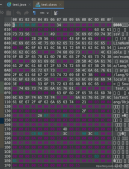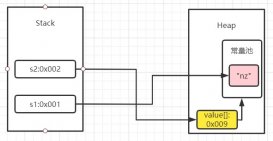本文实例为大家分享了Spring boot多线程配置的具体代码,供大家参考,具体内容如下
1、配置线程配置类
|
1
2
3
4
5
6
7
8
9
10
11
12
13
14
15
16
17
18
19
20
21
22
23
24
25
26
27
28
29
30
31
32
33
34
35
36
37
38
39
40
|
package test;import java.util.concurrent.Executor;import org.springframework.aop.interceptor.AsyncUncaughtExceptionHandler;import org.springframework.context.annotation.ComponentScan;import org.springframework.context.annotation.Configuration;import org.springframework.scheduling.annotation.AsyncConfigurer;import org.springframework.scheduling.annotation.EnableAsync;import org.springframework.scheduling.concurrent.ThreadPoolTaskExecutor;@Configuration@ComponentScan("test")@EnableAsync// 线程配置类public class AsyncTaskConfig implements AsyncConfigurer { // ThredPoolTaskExcutor的处理流程 // 当池子大小小于corePoolSize,就新建线程,并处理请求 // 当池子大小等于corePoolSize,把请求放入workQueue中,池子里的空闲线程就去workQueue中取任务并处理 // 当workQueue放不下任务时,就新建线程入池,并处理请求,如果池子大小撑到了maximumPoolSize,就用RejectedExecutionHandler来做拒绝处理 // 当池子的线程数大于corePoolSize时,多余的线程会等待keepAliveTime长时间,如果无请求可处理就自行销毁 @Override public Executor getAsyncExecutor() { ThreadPoolTaskExecutor taskExecutor = new ThreadPoolTaskExecutor(); taskExecutor.setCorePoolSize(5);// 最小线程数 taskExecutor.setMaxPoolSize(10);// 最大线程数 taskExecutor.setQueueCapacity(25);// 等待队列 taskExecutor.initialize(); return taskExecutor; } @Override public AsyncUncaughtExceptionHandler getAsyncUncaughtExceptionHandler() { return null; }} |
2、定义线程执行任务类
|
1
2
3
4
5
6
7
8
9
10
11
12
13
14
15
16
17
18
19
20
21
22
23
24
25
26
27
28
29
30
31
32
33
34
35
36
37
38
39
|
package test;import java.util.Random;import java.util.concurrent.Future;import org.springframework.scheduling.annotation.Async;import org.springframework.scheduling.annotation.AsyncResult;import org.springframework.stereotype.Service;@Service// 线程执行任务类public class AsyncTaskService { Random random = new Random();// 默认构造方法 @Async // 表明是异步方法 // 无返回值 public void executeAsyncTask(Integer i) { System.out.println("执行异步任务:" + i); } /** * 异常调用返回Future * * @param i * @return * @throws InterruptedException */ @Async public Future<String> asyncInvokeReturnFuture(int i) throws InterruptedException { System.out.println("input is " + i); Thread.sleep(1000 * random.nextInt(i)); Future<String> future = new AsyncResult<String>("success:" + i);// Future接收返回值,这里是String类型,可以指明其他类型 return future; }} |
3、调用
|
1
2
3
4
5
6
7
8
9
10
11
12
13
14
15
16
17
18
19
20
21
22
23
24
25
26
27
28
29
30
31
32
33
34
35
36
37
38
39
40
41
42
43
44
45
46
47
48
49
50
51
52
53
54
55
56
57
58
59
60
61
62
|
package test;import java.util.ArrayList;import java.util.List;import java.util.concurrent.ExecutionException;import java.util.concurrent.Future;import org.springframework.context.annotation.AnnotationConfigApplicationContext;import org.springframework.core.task.TaskRejectedException;public class Application { public static void main(String[] args) throws InterruptedException, ExecutionException { // testVoid(); testReturn(); } // 测试无返回结果 private static void testVoid() { AnnotationConfigApplicationContext context = new AnnotationConfigApplicationContext(AsyncTaskConfig.class); AsyncTaskService asyncTaskService = context.getBean(AsyncTaskService.class); // 创建了20个线程 for (int i = 1; i <= 20; i++) { asyncTaskService.executeAsyncTask(i); } context.close(); } // 测试有返回结果 private static void testReturn() throws InterruptedException, ExecutionException { AnnotationConfigApplicationContext context = new AnnotationConfigApplicationContext(AsyncTaskConfig.class); AsyncTaskService asyncTaskService = context.getBean(AsyncTaskService.class); List<Future<String>> lstFuture = new ArrayList<Future<String>>();// 存放所有的线程,用于获取结果 // 创建100个线程 for (int i = 1; i <= 100; i++) { while (true) { try { // 线程池超过最大线程数时,会抛出TaskRejectedException,则等待1s,直到不抛出异常为止 Future<String> future = asyncTaskService.asyncInvokeReturnFuture(i); lstFuture.add(future); break; } catch (TaskRejectedException e) { System.out.println("线程池满,等待1S。"); Thread.sleep(1000); } } } // 获取值。get是阻塞式,等待当前线程完成才返回值 for (Future<String> future : lstFuture) { System.out.println(future.get()); } context.close(); }} |
maven配置
|
1
2
3
4
5
6
7
8
9
10
11
12
13
14
15
16
17
18
|
<project xmlns="http://maven.apache.org/POM/4.0.0" xmlns:xsi="http://www.w3.org/2001/XMLSchema-instance" xsi:schemaLocation="http://maven.apache.org/POM/4.0.0 http://maven.apache.org/xsd/maven-4.0.0.xsd"> <modelVersion>4.0.0</modelVersion> <groupId>TestAysc</groupId> <artifactId>TestAysc</artifactId> <version>0.0.1-SNAPSHOT</version> <dependencies> <dependency> <groupId>org.springframework.boot</groupId> <artifactId>spring-boot</artifactId> <version>1.5.6.RELEASE</version> </dependency> <dependency> <groupId>org.springframework</groupId> <artifactId>spring-aop</artifactId> <version>4.3.10.RELEASE</version> </dependency> </dependencies></project> |
结果展示:
1、无返回结果

2、有返回结果

以上就是本文的全部内容,希望对大家的学习有所帮助,也希望大家多多支持服务器之家。
原文链接:http://www.cnblogs.com/yangtze-yufei/p/7754147.html















